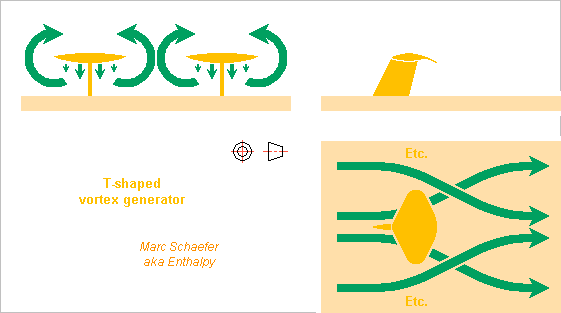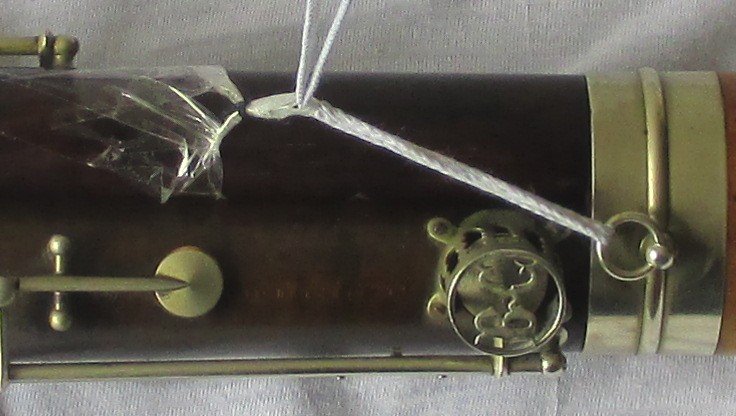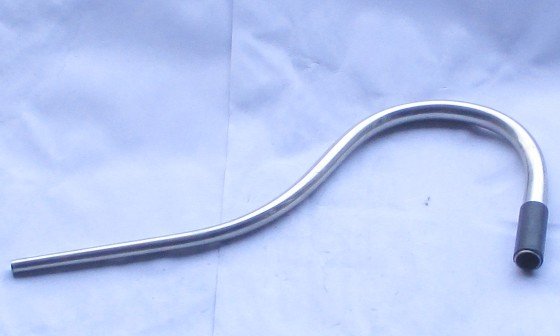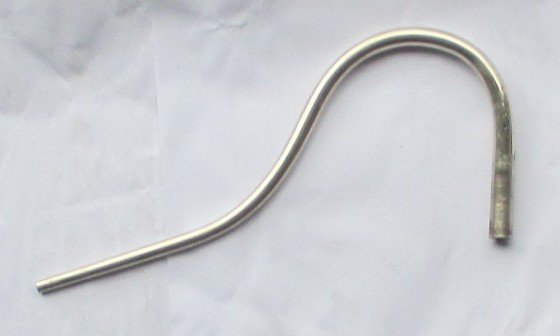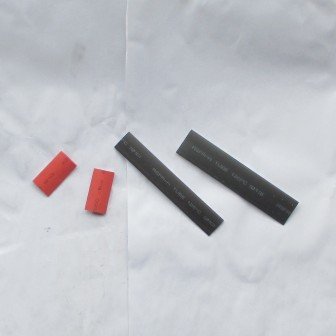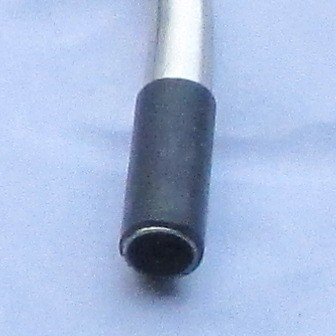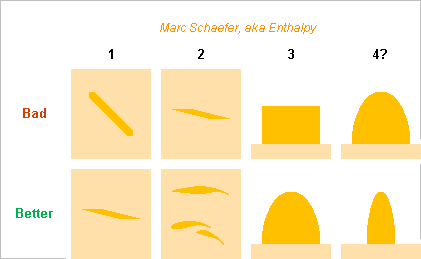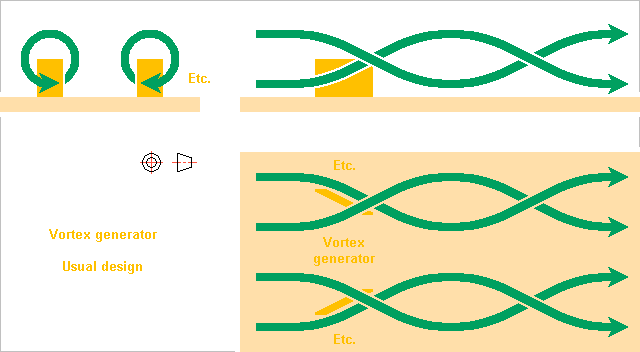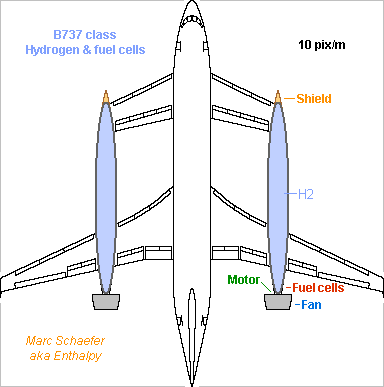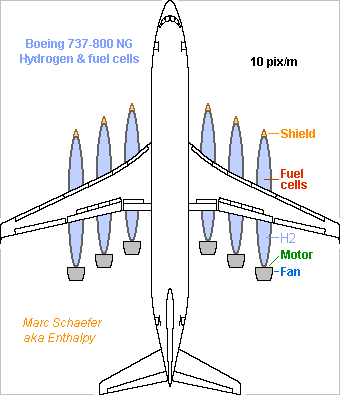-
Posts
3887 -
Joined
-
Last visited
-
Days Won
1
Content Type
Profiles
Forums
Events
Everything posted by Enthalpy
-
I reported palm oil here on January 31 scienceforums and someone reported success with bag balm on corks wikipedia so I tried. The composition varies a lot, I chose the weakest smell at the drugstore, this one contains petroleum (from mineral oil), paraffin (again from mineral oil), and in third position vegetable oils, plus minor things that don't lubricate. Very efficient lubricant too. The consistency makes spreading easier that the solid palm grease. The weak smell is too much for me, so I go back to palm oil. Individual choice of course. To understand why the oil must be replenished, I impregnated paper with palm oil 2.5 months ago. Despite ~57 C+O atoms per molecule, the paper has significantly dried now. I believe this is evaporation, because palm oil isn't sensitive to oxidation, and the paper feels grainy and looks more opaque again. However, evaporation is too slow to require new oil on the corks after a week. Meanwhile I must clean away oil from around the corks, so it's just swept away by repeated assembly and disassembly.
-
Hi Sensei, thanks for your interest! Before putting a first bit of confidence in a simulation software, I'd need to know exactly what it does and how, and compare by myself its results with measurements. If for instance a software for PC computes a boundary layer thickness based on an abscissa, rather than computing paths of air elements, then its predictions about a vortex generator have zero value. But if the software tries to compute turbulence in detail (a hard task for a PC!) then the result use to be random and depend too much on the upstream turbulence. My posts don't look professional, and I don't care. When I see research papers that publish only simulation, I think "cheap bullsh*t"" and "is there any science there?". Burt Rutan designed his planes with a pocket calculator or with a pencil and a sheet of paper Hi MigL, nice to read you here! Several vortex generators you cite have the advantage of acting at high angle of attack but stay harmless in normal flight to add less drag. They are often meant for angles of attack never considered on commercial planes. I hope the designs I propose create less drag than the existing ones. Beyond qualitative thinking, verification needs trials in a wind tunnel. Several proposals I made would also be efficient just before the position where the wing or body begins to shrink. This is a need for low-drag aeroplanes, and gliders put their turbulators there, far to the aft. They also have their maximum section much at the rear where possible, to keep a quiet flow for as long as possible.
-
The French government too wants to fly in 15 years airliners with hydrogen, fuel cells and electric motors ouest-france - bfmtv (both in French) Safran, a manufacturer of gas turbines, answers "burn the hydrogen instead". The others big actors answer "ambitious" despite the motors are obvious, the fuel cells exist already in Japan, and the tanks are a low-tech I described already. Start-up companies fly their demonstrators presently, with designs meant for the market. They would achieve airliners ahead of the big companies, if they were allowed to.
-
If a vortex generator serves to replace the boundary layer with fresh fast fluid, as I believe, then a vortex that extends for many turns wastes power and is less efficient. I propose instead to straighten the flow after half a turn or after a semi-integer number of turns. No more power is wasted in the fluid's lateral speed. Or equivalently, the straightener regains as a thrust a part of the drag occurring at the diffuser. The complete vortex generator shall then add a smaller drag and possibly work better. Here the chosen elements are perpendicular to the surface, but pretty much any shape fits, and the diffuser and straightener can use different elements and orientations. It's an opportunity to illustrate the aforementioned several elements per vortex and the flaps and Fowlers. Marc Schaefer, aka Enthalpy
-
The vortex generator elements can have new shapes. The T-shaped element has its deflecting surface outside the boundary layer to catch fresh fluid and steer it towards the surface of the wing, body etc. This faster and less turbulent fluid takes less power to steer than the boundary layer fluid it dislodges or mixes with. Where the surface recedes, the converging speed of the fresh fluid contributes to prevent flow separation. The inverted-U-shaped element is sturdier and nearly all its area serves to deflect fluid, even if in the boundary layer. The continuous shape minimizes the unnecessary turbulence. For high speed, the top can be swept back or one foot can stay forward, but this shape can still catch stray objects in the fluid. The inverted-J-shaped element can be swept back, with the tip well behind the foot, and then it should release most stray objects it catches. Marc Schaefer, aka Enthalpy
-
Second version of my bassoon balancer of January 17, 2020. The excellentissima idea is kept: hold at the boot, pass through a ring added at the tenor branch. The ring is added higher on the tenor branch and this relieves the left arm. It has two turns of adhesive tape around the branch plus the length for a gamma eye. It crosses the concave part of the tenor branch, where it separated over time, which doesn't hurt. A professional embodiment must improve that too. The ring passing between fingers 2L and 3L was only a tiny bit too high, so a longer gamma may enable it. Sewing thread tightens the gamma. This stabilizes the side position of the gamma to achieve perfect roll equilibrium. Also, the ring doesn't pull any more sidewise nor away the adhesive tapes at the pictures' left that hold it upwards. Marc Schaefer, aka Enthalpy
-
Maybe drawbacks like creep will appear over time, but after one daily training, the heatshrink sleeve works. I noticed no playing difference with cork, but couldn't compare both on real time neither. The tighter fitting immobilizes the bocal as I wanted, but tighter cork would do it too. Up to C# (just below the Sacre) where the comfort zone of the musician and the reed end presently, I noticed no difference; maybe things change at higher notes. These are the bassoon bocal without its cork, pieces of heatshrink sleeve, the bocal with the sleeves, and a zoom. The Chinese made the material affordable. It comes in many diameters and colours, length is commonly up to 1m. The diameter shrinks strongly and irreversibly at heat, from a hairdryer, a soldering iron, or with care from a lighter. Two plies happened to fit at my bocal, first with grease, later without. At first try, the shrunk sleeve moved around the bocal, so I held it with instant glue, which could be applied because the bocal is conical. ========== What can improve? Each ply is too thick and stiff for an adjustment, I had luck. Also, the conical bocal holds in an inverted cone at the bassoon. Maybe double-sided adhesive tape below the sleeve can adjust the diameter and slope if it resists the heat. Or a thread wound below the sleeve, which would give some elasticity. Heatshrink tape exists too, which enables big diameters, but I expect leaks where the tape ends. Below a sleeve maybe. Would it be thinner? Marc Schaefer, aka Enthalpy
-
Where woodwind joints fit in an other, cork makes them airtight usually, or formerly a wound and impregnated thread. I try heatshrink sleeve at my bassoon's bocal presently. At least, it needs no skills. The result is stiff and can minimize the dead volume, which should ease the altissimo. Details should come. Trials not today, it's too late. Marc Schaefer, aka Enthalpy
-
Thanks! Information by a manufacturer, I tend to believe them more easily. And they tell "60°C for bed sheets", which will save me €€€ as compared with 90°C. Environmental impact resembles economy, as reducing the electricity consumption improves both. Filling a machine, too. Money has the advantage of being easier to count.
-
An other good record of tromba marina LhS9u2f5hFE
-
Admitting that the total doses matters, 100* the intensity would reduce the exposure time from 2min to 1s.
-
Qualifications? Well, I leave you guessing mines. Do you really-really believe that a diploma is a guarantee that someone understands the topic a little bit? And that real experts have an academic background? Especially for radiocomms and antennas, you get better advice and expertise from amateur radio. Unless a competing antenna is botched (long cable without preamplifier), it can improve only by its height, position, size, sometimes background noise picking. A small indoor antenna better than the others is a scam, as is nearly everything for consumer electronics. And don't forget to test under rain conditions. Line-of-sight does matter, but even then, ground proximity determines the attenuation of terrestrial communications. This differs radically (40-60dB worse) from free-space transmission, but is rather well modelled just by a conducting ground. The received power varies as h12*h22, where h1 and h2 are the heights of the transmitting and receiving antennas. So a mast on the roof for 10m height gains much over an indoor antenna 3m over the ground, as much as an antenna 10 times bigger, provided that a preamplifier at the antenna compensates the big cable losses. Some antennas, for instance parabolas, are sensitive to the exact shape. Most are disappointingly insensitive to everything. Added elements bring at most 2dB each, a small Uda-Yagi improves only 10dB over a single dipole. Depending on the weather, the mountains... a transmission uses to be 20dB better or worse than necessary, so most times, all refinements can be completely discarded. You may notice a difference when someone moves before the antenna or when it rains, that is, well after you left the shop.
-
Somehow, I have in mind that bed sheets must be washed quite hot. I try to fill the machine completely then, that's why I bought many bed sheets. I suppose (but didn't check in detail) that washing powders still don't work properly in cold water. The ones I find at supermarkets demand 30°C or 40°C at least. A washing powder efficient at cold would be the proper solution. Information from a producer of washing powder or from a manufacturer of washing machines would convince me. In the past, they wanted hot water. If this changed, they should tell it, as it would be hugely useful. Their opinion has more weight for me than a Press article that bears no consequence from random opinions. ========== Hi Swansont, I firmly believe that the readers feel invited to discussion, even if I ask no explicit question, just because this is a forum.
-
The electrodes go through ceramic with a very strong interface. Not every metal achieves that. I suspect refractory, corrosion resistant metal covers only the tip in the combustion chamber.
-
Fossil fuels are dirt-cheap. Coal is outrageously cheap, gas is extremely cheap, oil is very cheap. Presently, some renewables are still several times more expensive than oil but half as expensive than uranium fission. Then, you must distinguish between electricity and other uses. Cheap electricity doesn't suffice to run a car for 1000 km. And even more, you must check if the price includes taxes or not: this can make the price *5, is one of the big money income for governments, and explains why most governments want to keep fossil fuels, whatever they claim. Hydrogen, as a storage means, competes with batteries. As it looks, batteries have won for cars and lorries, despite serious research with heavy budget was made in hydrogen storage. But my insulated tank makes liquid hydrogen extremely interesting for helicopters (and quadcopters, hexacopters...), where the energy per mass unit of kerosene isn't satisfactory. One hour is too little for a rescue operation in the mountains or at sea, too little to travel comfortably to an oil rig, and many more uses. scienceforums and subsequent messages Interesting for other aeroplanes too, which may adopt it after or before helicopters do scienceforums and subsequent messages Presently, hydrogen is produced by incomplete combustion of methane CH4, which releases CO2. But we can do it better. In a first improvement, we can convert methane to hydrogen and a gasoline equivalent without burning its carbon chemicalforums Research for that is already done and it works. It would be a means to run hydrogen and gasoline users on natural gas rather than oil, hence to reduce dioxide emissions. It is not done because it costs investments. Even the C3+C4 fraction from gas and oil wells is burnt at the well because it's not worth transporting, figure that. Getting hydrogen from it would emit no more dioxide, or better, we could transform the rest into polypropylene or high-octane additives. A huge plant is presently being built in the Netherlands to produce hydrogen from renewable energy, so keep hope. I read they want to use electrolysis, a choice bizarre to me. Other paths like the zinc oxide cycle wikipedia don't waste power to make electricity nor electrolyse. The zinc oxide cycle runs on concentrated sunheat, which is cheap.
-
Hi Studiot, thanks for your interest! Every materials has its limits. Plastics, or rather some plastics, should not be used in some applications. For the tank of a gasoline lorry, I'd trust only steel of certain compositions, not the stronger lighter carbon-epoxy composites. Some polymers withstand shocks and deformation extremely well. Polyurethane outperforms steel. Polyamides can be excellent. PE, PP... have zero water absorption. Polyimide doesn't age, even in space, with direct exposure to solar UV and to ionizing particles. So while there is no universally applicable polymer, whatever new, they are very much usable, if the designer knows their limits and chooses them with judgement. My first intention with stretched LCP, PP and others is the body of woodwind instruments. Thick material, tiny forces, no strong shock, negligible UV. Only water, which LCP and PP don't absorb. In a former job, where I designed hardware for crash-test, stiffer and stronger polymers would have been highly welcome, and neither UV nor water was present.
-
The mass of plutonium stays roughly constant as the explosion yield decreases. The chain reaction needs a minimum amount of fissile material. The smaller explosion results from a design voluntarily less efficient, supposedly where the fissile material is expelled earlier from the reaction zone, so a smaller fraction of it detonates. Fission energy can't attain 0.1*c because it's not concentrated enough. Even the fission fragments themselves don't. One fission frees 100MeV while one plutonium atom weighs 200GeV. But 0.1*c is a kinetic energy equalling mass/200. A factor of 10 is missing even before including other masses and huge losses. The Log of initial and final masses can't compensate for that, not even with many stages. Beware most proposals for travel to stars are just plain cr*p. Where the author works and where he gets published changes nothing to that. By the way, D-3He fusion is much more difficult than D-T, and electron beams are no serious candidates for inertial confinement.
-
What is 100.000 $ - 10000$ expensive? I mean, who pays who for what?
-
The vortex generator has a more detailed explanation, less common than the vague ones, but existing already. Friction slows down the fluid near the wing's, body's... surface, creating a boundary layer there. Where the wing, body... recedes, the fluid must regain pressure from its speed. But the fluid has less speed in the boundary layer. Fluid from other origin, with more speed+pressure, can dislodge it. Usual explanation of flow separation and stalling. The intentional vortex replaces slow fluid near the surface by fresh fast fluid or a mix of both. This avoids or eases the flow separation. If this explanation holds, vortex generator designs can improve. We need movement to brings fresh fluid near the surface, but no short-range turbulence. And creating a side fluid movement is the same as creating lift (...at least far from other surfaces), for which wings have been optimized for decades. The vortex' side speed must swap slow and fresh air over the useful distance. Faster is wasted power. Also, the usual excessive angle of attack of the generator's elements lets the flow separate from their extrados, which reduces their lift. Some designs visibly integrate that, but most don't. The elements should have a curved profile, not straight. Same reason and optimum as a wing profile. Where a big angle of attack is needed, use a Fowler design or similar. Lift is unwanted at the tip of the elements. The short-range vortex there creates drag but mixes nothing. The chord and the local angle of attack can decrease towards the tip. The best distribution differs from a wing's ellipse: it would be linear for a uniform vortex angular speed if the movement were uniform upstream the element, but speed is smaller near the surface. Designs that don't resemble blades can improve that too. Wings improve their lift-to-drag with shorter chords, but I presently believe this holds at constant area, not at constant width. More reasons favour shorter chords, which several elements per vortex can enable. They would help an other like turbine blades do. If algae, fluid compressibility... need it, the elements can be swept back or have a delta shape, like a wing. Marc Schaefer, aka Enthalpy ========== Hi MacSwell, thanks for your interest! I also read (but have no opinion) that dimples also make the path of a golf ball better predictable, by spoiling the Coanda effect.
-
Hello nice people! Some objects moving against a gas or liquid, especially wind turbines, aeroplanes and water craft, include a vortex generator at their wing, fuselage or hull, usually before the body recesses. The vortices avoid or ease the "flow separation", so a wing lifts at higher angles of attack, and at fuselages, the drag decreases despite the vortices. wikipedia Heat exchangers can use them too. The common explanations are as undetailed as "turbulent flows separate later" or "introduce energy in the boundary layer". Consistently, usual designs of vortex generators are quite crude, as depicted below or with small variations. While quite a bit of experimenting was done in half a century, the generator's shape varied in small amounts, and the performance gain is limited. But maybe the items can be re-thought. I mean, re-thinking is always possible, but sometimes it improves something.
-
Here's a Burt Rutan's Voyager-style B737-class airliner with two hulls for hydrogen and one for the passenger and crew. The cabin and the D=2.2m L=19.2m ellipsoid tanks are to scale. The centre of mass and the wing area are not significant. These longer tanks cumulate 2/3 of the cabin cross area and are sleek, plus the rear fan interacts favourably with their drag. This design might improve the drag. A tandem, where the front wing extends beyond the tanks, is possible too. Marc Schaefer, aka Enthalpy
-
Here's a Boeing 737-800 NG with hydrogen nacelles. Six D=1.6m L=13.1m ellipsoids carry the hydrogen. Their construction is already described. They cumulate as much cross-section as the cabin but can be sleeker. Six tanks improve that over two, and they take less height. They are away from the cabin's doors. Motors being cheap, I prefer one per tank. More fan area improves the efficiency. The rear fans interact favourably with the drag. Exchanging electricity suffices for redundancy, while the hydrogen doesn't leave the nacelles. The nacelles' pylons can carry the fuel cells and also the flap actuators. The tanks are exposed below the wing. I used to consider it a drawback, but at least a controlled belly landing separates the hydrogen from the travellers. This design adapts to other plane sizes and ranges. Marc Schaefer, aka Enthalpy
-
New record of the dulcitone, very nice: 28nMONwXX1w





